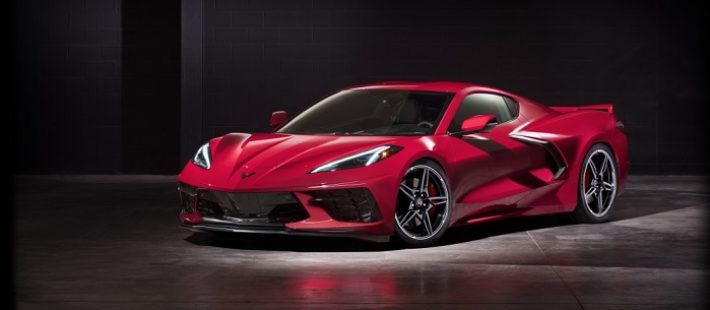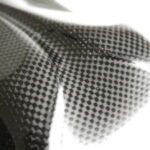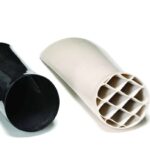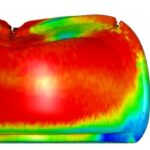Among the range of innovative components on the new General Motors Chevrolet Corvette Stingray is the world’s first curved pultruded carbon fibre bumper beam made from multiaxial fabrics supplied by Vectorply, of Phenix City, Alabama.
It is being produced by Shape Corp of Novi, Michigan, USA, using a pultrusion process developed by Thomas Technik & Innovation (TTI) of Bremervörde, Germany.
The first production model Corvettes will be available in early 2020, but development for the carbon bumper beam began some years ago.
In 2014, Vectorply joined forces with Shape to begin developing specialised carbon fabrics and laminate schedules for the part, employing VectorLam, Vectorply’s proprietary laminate analysis software. VectorLam provides a cloud-based, multi-platform compatible approach to classic laminate theory and helps customers achieve the desired goals of stiffness, strength, weight and cost by allowing users to design the perfect laminate for their application.
“We took the profile of Shape’s bumper beam and modified VectorLam to analyse the section in order to narrow-in on the optimum laminate,” said Vectorply senior composites engineer Molly Ditzler. “This was in the initial stages and Shape took it much further, including an FEA to verify the results.”
The hollow, curved bumper beam offered a unique challenge due to the complex structure, dependent on multiple shear wall supports.
As the relationship between Shape and Vectorply grew, several different versions of advanced carbon fabrics were produced for testing and validation.
As new markets and applications continue to push the boundaries of what is possible through composite production, Vectorply intends to play an integral role in the development and production of advanced composite fabrics to meet growing demands and expectations.
“Our goal at Vectorply is to help customers build the best products through the use of highly engineered composite reinforcement fabrics and optimised laminates, especially in new and emerging markets,” said Vectorply president and interim CEO Trevor Humphrey. “Shape Corp and GM’s curved, pultruded bumper beam is a monumental accomplishment in the automotive and composite industries, and we are proud of the role that we played in the development and supply of specialty carbon fabrics for this groundbreaking application.”
Source: Inside Composites











